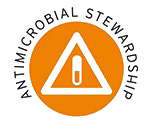April 24, 2019 -ABSTRACT
The persistent presence of pathogenic bacteria is one of the main obstacles to wound healing. Detection of wound bacteria relies on sampling methods, which delay confirmation by several days. However, a novel handheld fluorescence imaging device has recently enabled real-time detection of bacteria in wounds based on their intrinsic
… Read More
April 24, 2019 -ABSTRACT
BACKGROUND: Partial and full thickness burns require surgical treatment, such as early débridement and skin transplantation in MEEK/MESH technique or further reconstructive surgery. Infections of burns or transplanted areas limit surgical success and increase patient mortality. For split-thickness grafts in MEEK technique a superficial silk is applied as a
… Read More
November 1, 2018 -Use of the MolecuLight i:X to image for bacterial fluorescence, in conjunction with clinical signs & symptoms, adds an additional bacterial-specific piece of information that can be captured and considered in real-time. Read More
June 1, 2018 -ABSTRACT Introduction:
Amputations amount to $8.3 billion in hospital costs annually in the United States.1 In the general population of England more than 2700 lower limb amputations occur annually, with a mortality rate of 17%.2 Infection is a major potential complication in all wounds, however the highest rate of
… Read More
June 1, 2018 -ABSTRACT
Colorectal resections have a 4-25% acute surgical site infection rate, despite perioperative best practices for prevention. Repair of abdominal wall hernias carry risks for wound failure and infection. Management of wounds is resource intensive (~70% of home care visits). Care providers assess traditional markers for wound infection (pain,
… Read More
June 1, 2018 -ABSTRACT Aim:
Real-time, point-of-care detection of critical bacterial colonization relies primarily on subjective visual inspection and clinical signs and symptoms. When wounds are illuminated by violet light, most pathogenic bacterial species emit a unique red fluorescence signal due to the production of endogenous porphyrins, while Pseudomonas aeruginosa uniquely emits
… Read More
May 14, 2018 -Clinical Synopsis
Patient Condition: 47 year old male required an above knee amputation following a traumatic burn injury. Patient reported severe pain and developed an abscess ~6 weeks post-amputation.
Patient required a right, above knee amputation after severe burns. The stump later became infected, therefore was evacuated, washed out and
… Read More
January 1, 2018 -ABSTRACT Objective:
Current standard diagnostic practice of bacterial infections by visual inspection under white light is subjective, and microbiological sampling is suboptimal due to high false negative rates and the lengthy time needed for culture results to arrive. The MolecuLight i:X Imaging Device attempts to combat the issues faced in standard
… Read More
August 2, 2017 -ABSTRACT Objective:
Bacteria in chronic wounds are invisible to the naked eye and can lead to delayed wound healing. Point-of-care bacterial fluorescence imaging illuminates a wound with 405 nm light, triggering bacteria to produce red fluorescence and enabling real-time bacterial localization. Prospective, single-blind clinical trials (clinicaltrials.gov #NCT02682069,#NCT03091361) were conducted to
… Read More 









